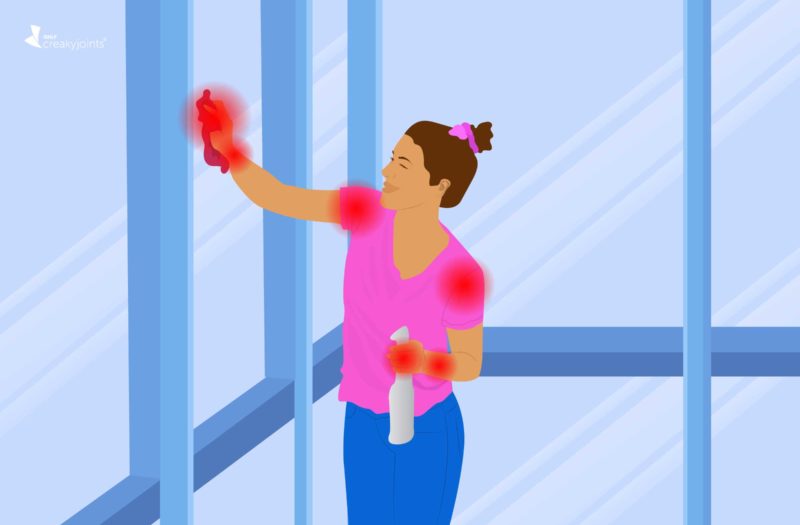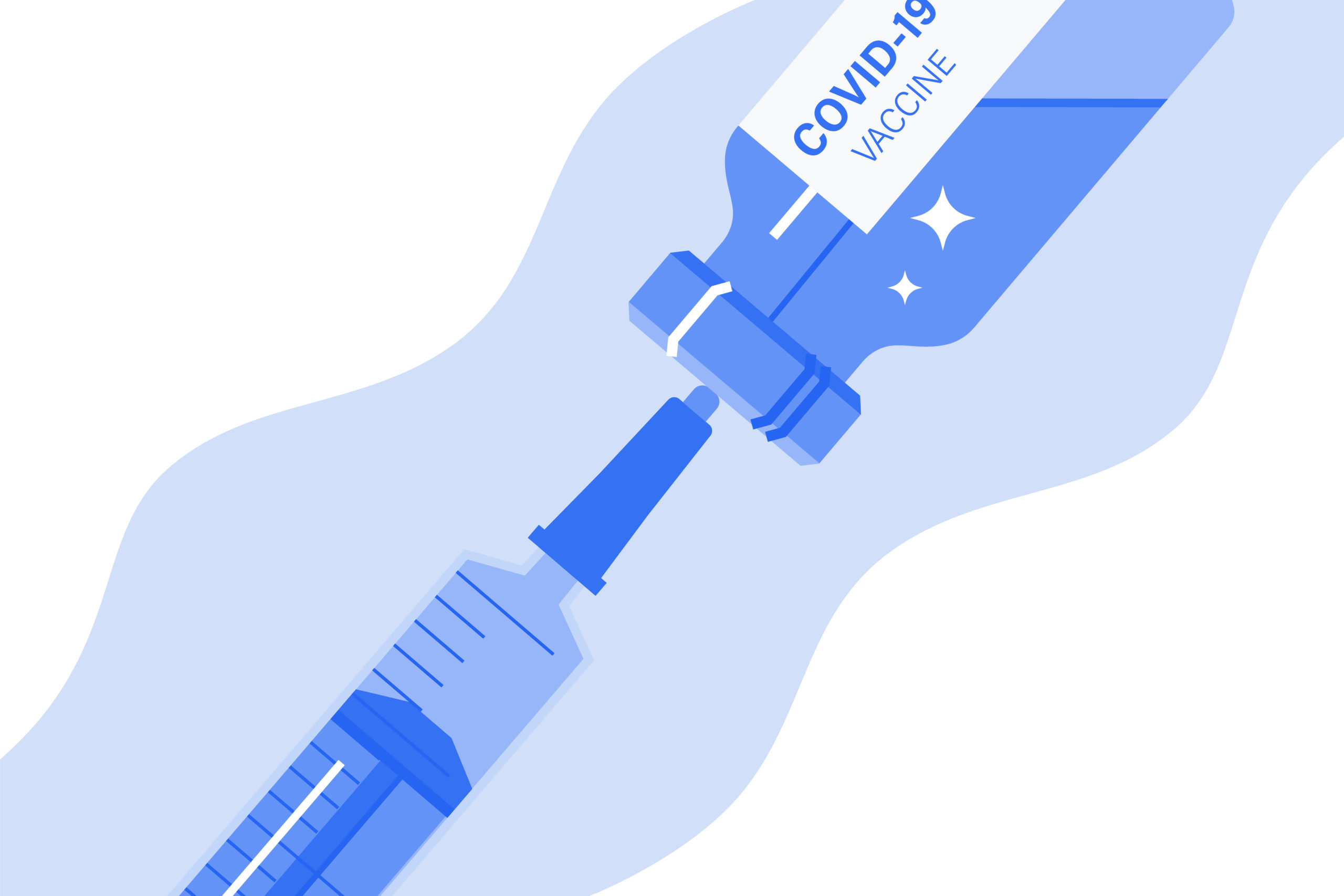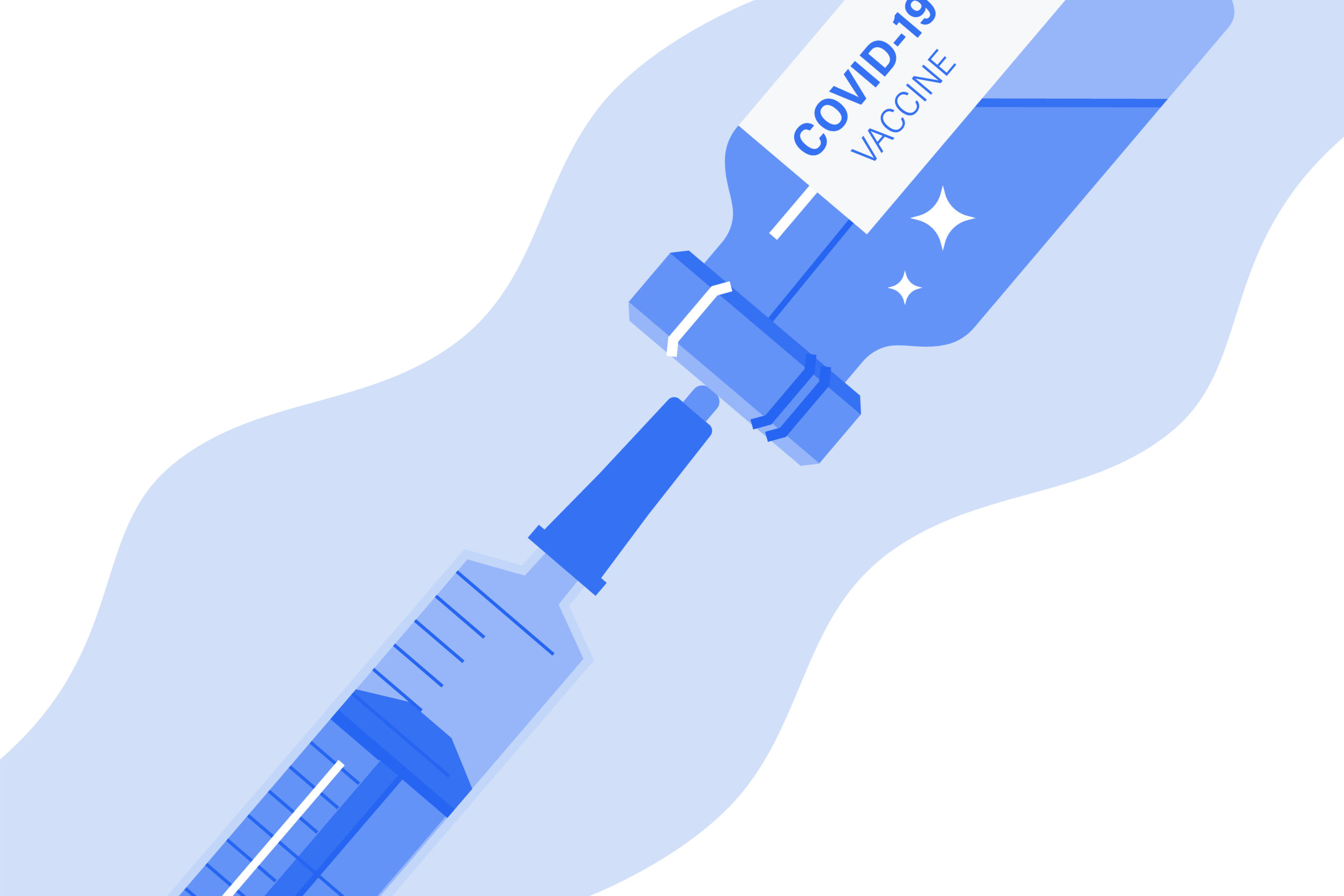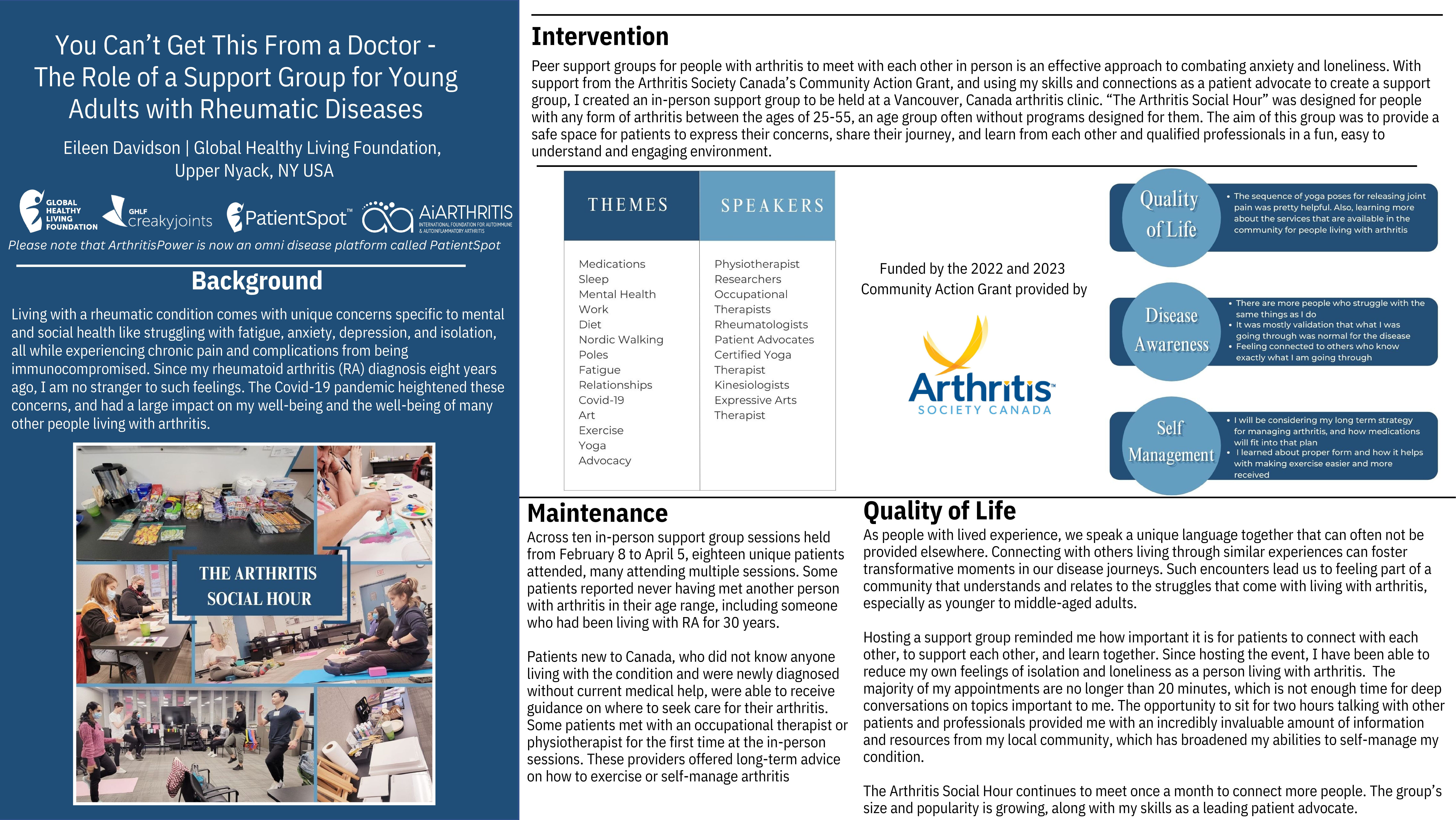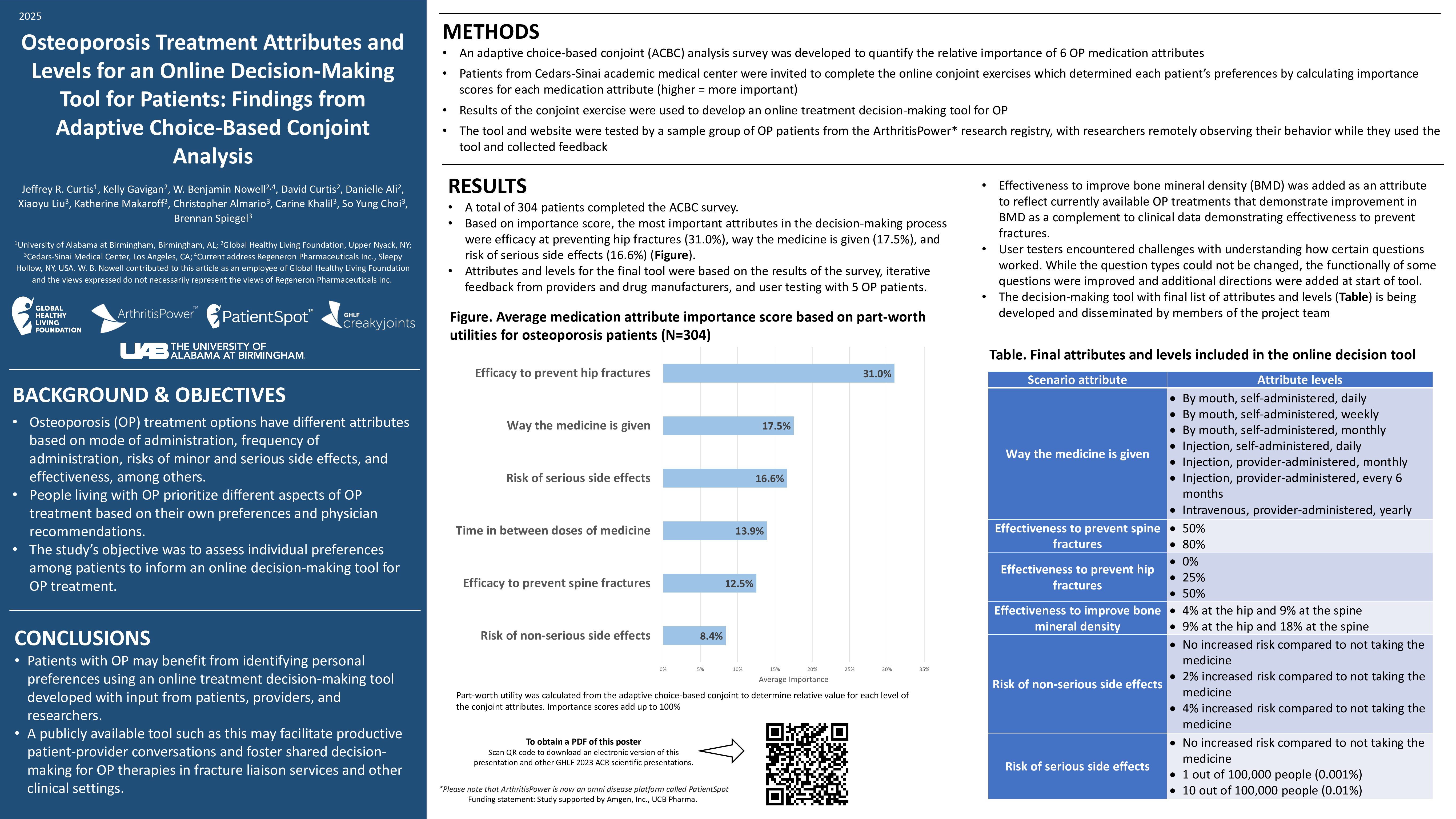If you’ve been spending more time at home these days — and who hasn’t — chances are you’ve noticed that your windows are in need of some cleaning. Smudged, streaky windows are a pet peeve for many of us, but they can also be a pain to clean if you’re living with arthritis. Washing the windows involves plenty of reaching, bending, and gripping of washcloths, which can put stress on your joints or even cause injury.
Still, you don’t need to live in a world of mucky windows. Follow these simple strategies to make window washing easier and gentler on your joints when you have arthritis.
1. Extend your tools
Certain window-washing tools can help reduce the amount you need to stretch to get to all corners of your window. Long handles help you avoid reaching or even stooping in ways that exacerbate your arthritis symptoms, per the Cleveland Clinic.
“With washing windows, you have to raise your am up for long periods of time, which can put a lot of strain on the joints, and the shoulder joint in particular,” says occupational therapist Julie Dorsey, OTD, OTR/L, an associate professor of occupational therapy at Ithaca College in Ithaca, New York. “Anything to extend your reach, like a long-handled squeegee, could help.”
You might even put a paper towel around the bottom of a Swiffer mop — which is long but lightweight — and use that to remove dust and grime. “That could really help if you have decreased range of motion in your shoulders and can’t reach up really high.”
2. Make use of a step stool
Using a sturdy step stool could also bring you closer to the surface you need to clean and help you to avoid overreaching for extended periods of time.
“Make sure that if you do use a step stool, it’s in good shape and stable. Don’t stand on chairs that could tip,” says Dorsey. “Think about your balance, and if you’re able to stand on a step stool.”
3. Avoid gripping
If you have arthritis in your hands, gripping may be painful or difficult. You can avoid prolonged gripping positions by building up the handle of your squeegee with a washcloth or paper towels (fasten with tape or rubber bands).
In the market for a new squeegee? Look for one with a special grip that’s thick and easier to grip, suggests the Cleveland Clinic.
Also think about how you’re cleaning your windows — you may not need to grip anything at all. “You can use a flat palm on either a mitt or even a flat paper towel, whatever you are using to clean,” says Dorsey. “Because windows are flat, they lend themselves to that nice open palm position.”
4. Practice proper posture
When you’re washing your windows, keep your elbows close to your sides. “This keeps the shoulder in a more neutral position, so the muscles aren’t working as hard,” says Dorsey.
Also try to move your whole body when washing your windows — say, by stepping side to side rather than stretching or twisting into awkward positions. Go onto your tiptoes when reaching upward if you can to help extend your reach.
As you’re moving your cleaning supplies around, focus on using your larger joints, which are stronger than smaller ones. For instance, if possible, carry supplies with your palm open and distribute the weight equally over your forearm, per the Mayo Clinic. When you pick items off the floor while moving from window to window, bend at your knees and hips.
5. Take one window at a time
To make window washing less of a lift, try to do it regularly so grime doesn’t build up, but tackle your windows in small chunks.
“It’s possible to overdo it when you’re washing your windows and not paying attention to your pain or discomfort until it’s too late,” says Dorsey. “That can happen if you push through to finish the task as opposed to saying, ‘Okay, I’m only going to do these two windows right now, and then I’m going to come back to this later.’”
A good habit to get into is keeping a pain journal so you can stay attuned to how your body is feeling. Ask yourself what your pain level is on a level of zero to 10 before starting to wash your windows, says Dorsey. After each window, rate it again. If your discomfort starts to climb, you’ll know at what point you need to take breaks when washing windows.
“The pain scale could be a way to give a reference point for assessing your own pain, and that can be used for any task, whether it’s washing windows or doing yardwork,” says Dorsey. “It might help you to catch the discomfort sooner.”
As a general rule of thumb, you should reconsider how you do an activity if pain persists for one hour afterward, per the Mayo Clinic. Continuing to do certain tasks despite pain can damage your joints (but forgoing use of your joints altogether can lead to stiffness).
Not Sure What’s Causing Your Pain?
Check out PainSpot, our pain locator tool. Answer a few simple questions about what hurts and discover possible conditions that could be causing it. Start your PainSpot quiz.
Got Arthritis? You Can Clean and Garden With Less Pain. Cleveland Clinic. May 5, 2014. https://health.clevelandclinic.org/got-arthritis-you-can-clean-and-garden-with-less-pain.
Interview with occupational therapist Julie Dorsey, OTD, OTR/L, an associate professor of occupational therapy at Ithaca College in Ithaca, New York
Rheumatoid arthritis pain: Tips for protecting your joints. Mayo Clinic. April 23, 2020. https://www.mayoclinic.org/diseases-conditions/rheumatoid-arthritis/in-depth/arthritis/art-20047954.


